September 2024
Kon Tiki Museum
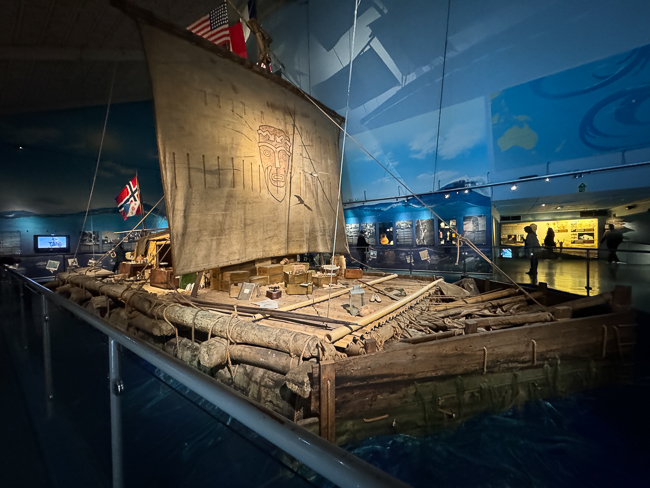
Kon Tiki
I grew up with stories of Thor Hyerdahl and Roald Amundsen, so visiting these museums on a very rainy day was a real education. Hyerdahl was a handsome adventurer and Norwegian ethnologist who became famous by organizing and leading the famous Kon-Tiki (1947) and Ra (1969–70) transoceanic scientific expeditions.
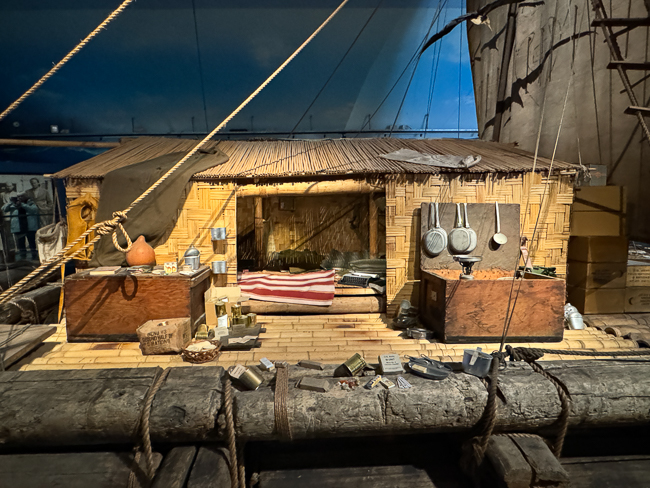
The cabin of the Kon Tiki
On April 28, 1947, Heyerdahl and a small crew sailed from Peru in the primitive raft Kon-Tiki. (named for a legendary Inca god) and made from locally available balsa logs from Callao, Peru. Three and a half months later, their arrival in Polynesia demonstrated the possibility that the Polynesians may have originated in South America.
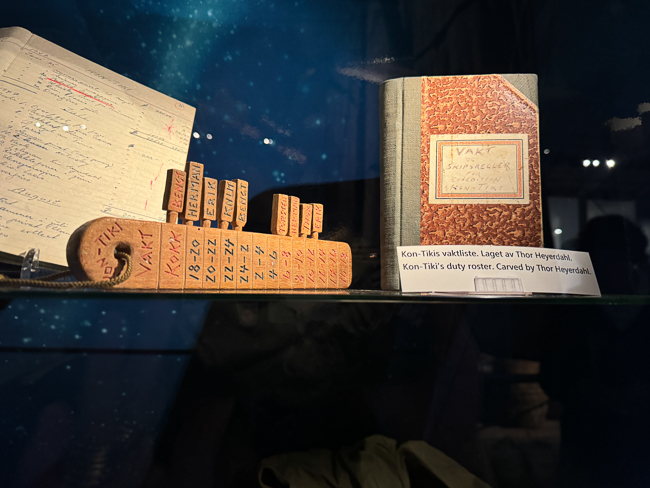
*
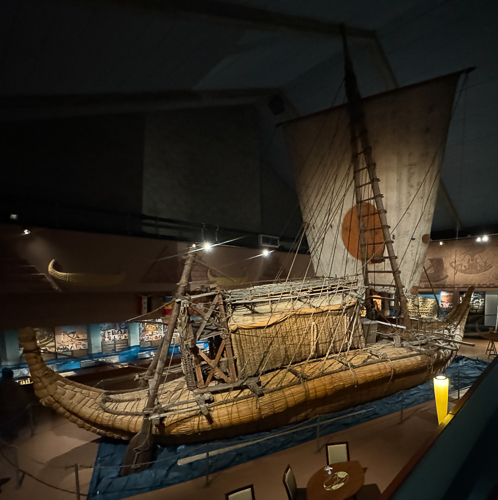
The Ra
In 1969, Heyerdahl and a small crew crossed the Atlantic Ocean from Morocco to within 600 miles of Central America in a facsimile of an ancient Egyptian reed boat, the Ra. Thus, they confirmed the possibility that the pre-Columbian cultures of the Western Hemisphere might have been influenced by Egyptian civilization.
Both expeditions were intended to prove the possibility of ancient transoceanic contacts between distant civilizations and cultures. Thor Heyerdahl was right there was contact with South America, but he was not right that everyone came from there. The population of Rapa Nui has a small contribution of DNA from South America, dating to pre-European times. Other of Heyerdahl’s theories regarding navigation have been dispelled.
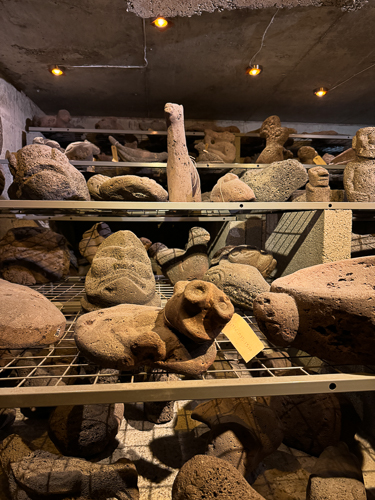
This is a collection of cave stone sculptures collected by Heyerdahl from Easter sland. In 1955-56, he learned that there were old family caves passed down through the generations. Heyerdahl was the first outsider allowed into one of these caves. These sculptures vary in age and have been at the Kon Tiki Museum since Heyerdahl brought them back to Oslo.
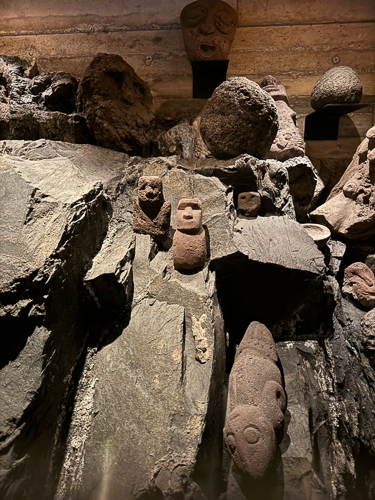 In 2019, King Harald V and Queen Sonja of Norway signed an agreement that pledged to transfer items from Oslo’s Kon Tiki Museum to a “well-equipped” museum on Easter Island.
In 2019, King Harald V and Queen Sonja of Norway signed an agreement that pledged to transfer items from Oslo’s Kon Tiki Museum to a “well-equipped” museum on Easter Island.
Fram Museum
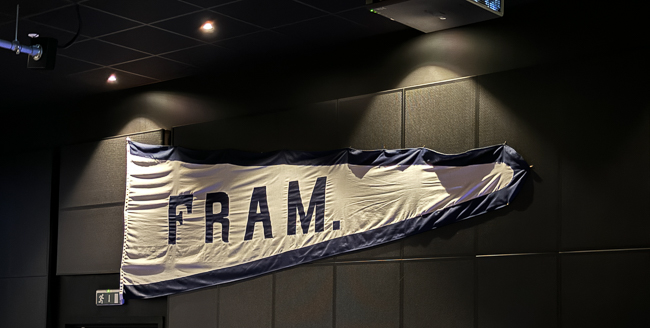
The Fram Museum
Opened in 1936, the Fram Museum honors Norwegian polar exploration in general and four Norwegian polar explorers in particular – Fridtjof Nansen, Otto Sverdrup, Oscar Wisting, and Roald Amundsen.

The Fram Museum
Fram (“Forward”) is a ship that these Norwegian explorers used on expeditions to the Arctic and Antarctic regions between 1893 and 1912.
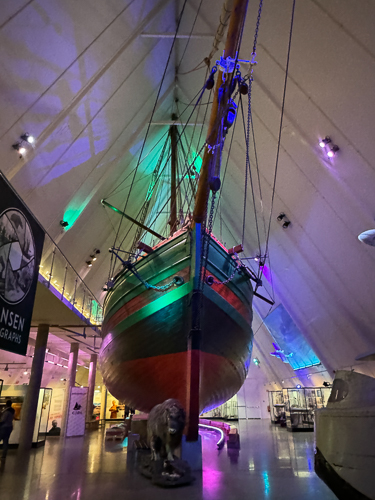
Gjøa, the first ship to sail through the Northwest Passage
Roald Amundsen and a crew of six on the Gjøa were the first to sail through the Northwest Passage in a three-year journey, ending in 1906.
Amundsen then decided to be the first to adventure to the South Pole.
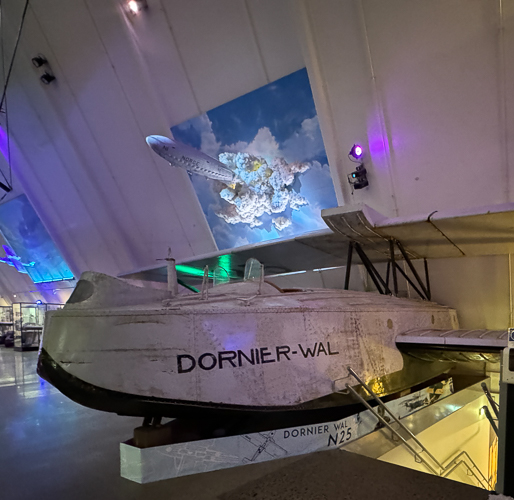
In 1925, Amundsen attempted to fly to the North Pole with five others in two aircraft, the N24 and the N25. After more than eight hours in the air, they landed on leads in the drift ice. The six men struggled for 3½ weeks to create a runway on the drift ice.
Amundsen visited San Francisco, California, in the autumn of 1913. He was there on a lecture tour when Norwegian-American Johnsen gave him a plane ride, strengthening Amundsen’s belief that this was the transport method of the future.
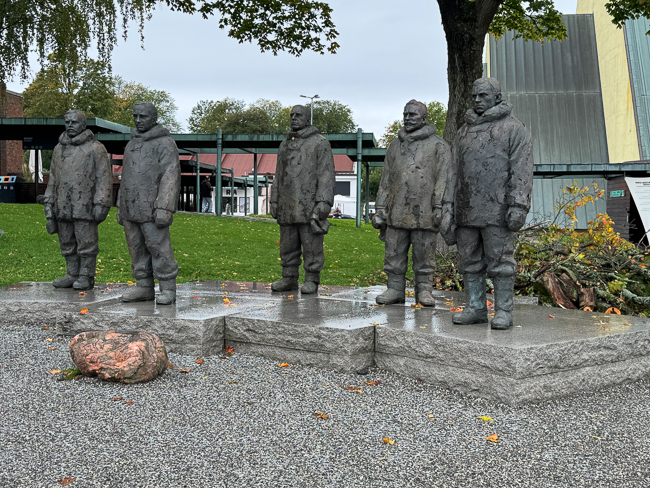
Sculpture of Antarctic Explorer Roald Amundsen and his team is located outside the Fram Museum.
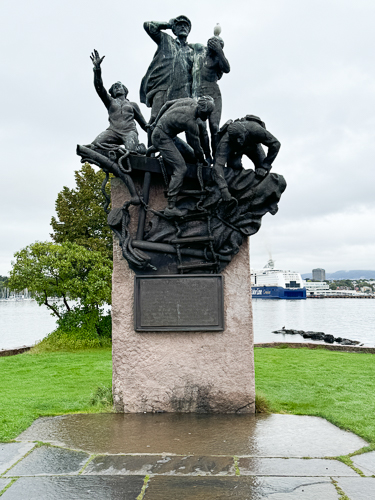
This war memorial sits on the water outside the Fram Museum. The Google translation of the plaque reads: “In the Second World War 1939 – 1945, over one thousand Nordic vessels from merchant fleet and navy performed countless military missions and transported 145 million tons of invaluable importance to the Allied victory. Trade ships were armed, and more than half were lost. Four thousand five hundred were killed in the battle for Norway’s liberation of our seafarers. The courage and loyalty will always be reminded of deep respect and gratitude.”
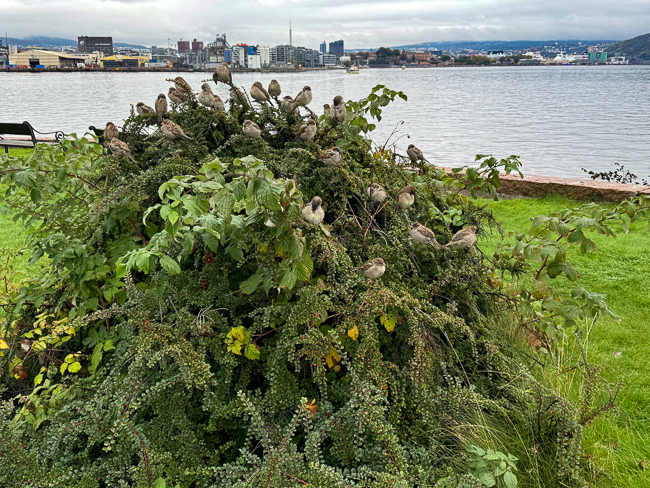
Next to the war memorial was this collection of birds completely ignoring the human taking their photo.
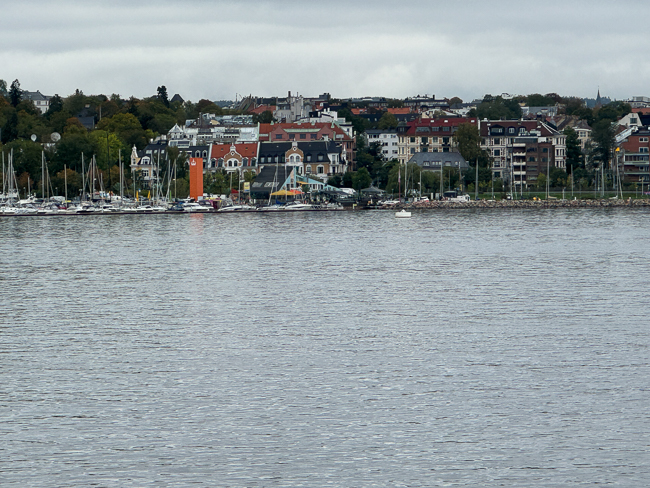
Inner Fjord
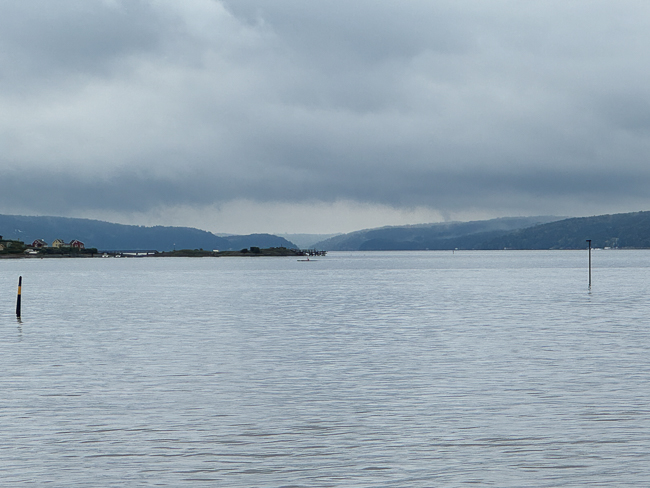
The inner fjord looking towards the direction of the North Sea
I took the ferry across the inner Oslo fjord to return to my hotel. This interesting sculpture is on the ferry landing. It is by Ola Enstad, who also did the divers found near the Radisson on the Akerselva River.
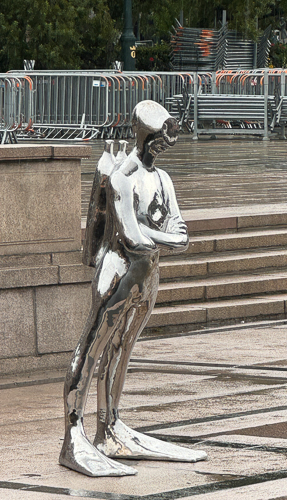
“Dykkaren” by Ola Enstad